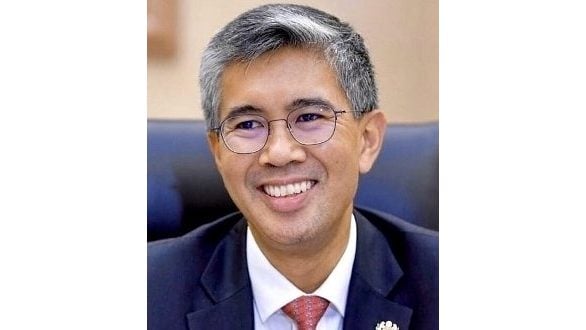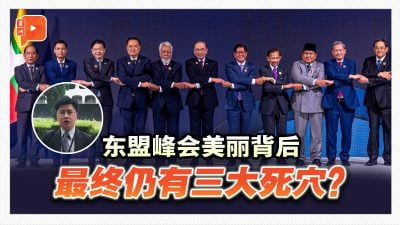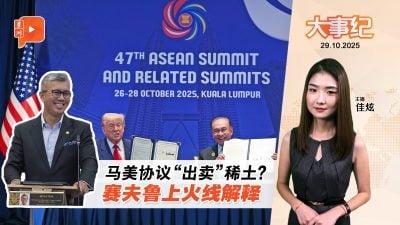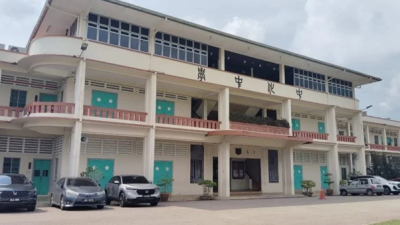
The year 2025 is fast approaching. For Malaysia, 2025 will be the year we take over the Chairmanship of the world’s fifth largest economic bloc, with its 680-million strong population.
As one of this regional grouping’s founding fathers in 1967 – together with Indonesia, Philippines, Singapore and Thailand – ASEAN has been such an integral part of Malaysia’s past, present and future that our Chairmanship in 2025 is nothing less than a defining moment on how we could lead the region towards realising its current potential fully.
The year 2025 is equally significant for ASEAN because it also marks the 10th anniversary of the ASEAN Economic Community (AEC).
The theme for Malaysia’s Chairmanship is “Inclusivity and Sustainability” – two key values which have drawn upon Malaysia’s MADANI values of Sustainability, Compassion, Respect, Innovation, Prosperity and Trust.
Tackling key regional challenges
For MITI, it is exactly those values that will underscore the outcome-driven economic agenda we will be promoting through ASEAN’s Economic Pillar.
“Inclusivity and Sustainability” as Malaysia’s ASEAN 2025 value proposition is admittedly very simple, even prosaic.
But it truly encapsulates the brutal simplicity of what is facing our region: if Southeast Asia cannot become more inclusive and sustainable, other propositions such as economic prosperity and tech innovation may prove to be empty wins.
Indeed, decades have been spent talking about the need for a “people-centric ASEAN”, of ensuring the economic wins of regional integration benefit all, including women, youth and micro-medium and small enterprises (MSMEs).
Additionally, our economies and people will also be left behind if we cannot create a regional ecosystem that maximises the benefits of e-commerce and digitalisation.
Furthermore, our lands and economic ecosystems will also be devastated if we fail to embrace sustainability and transition towards greener energy and carbon neutrality.
The MADANI Government, too, espouses prosperity that must not only benefit the rich and elites, and must not be at the expense of our environment which is already fragile from the impact of centuries of carbonised economies and industries.
So, in effect, “Inclusivity and Sustainability” is the perfect theme for ASEAN 2025 because it is what the region, and I dare say even Malaysia, need to succeed in the future.
A packed, outcome-driven 2025
The “main events” will of course be the two ASEAN Summits in Kuala Lumpur, along with Related Summits like the ASEAN+3 or East Asia Summits.
It will be very exciting to see the leaders of our region and the wider world all descend upon our soil.
But in fact, our year-long commitment involves different levels of meetings across different ministries to progress ASEAN’s political-security, economic and social-cultural integration agendas.
For ASEAN’s Economic Pillar, which the Ministry of Investment, Trade and Industry (MITI) and several other Ministries are responsible for, we will classify our Priority Economic Deliverables (PEDs) into four key thrusts, namely Enhancing Trade and Investment, Creating an Inclusive and Sustainable Pathway, Promoting Integration and Connectivity of Economies and Building a Digitally Resilient ASEAN.
More details about what we hope to achieve will be provided as time goes on.
My colleagues in the Cabinet will of course have their own initiatives on their own and in collaboration with each other.
At the working level, the Senior Economic Officials Meeting just concluded in Kota Kinabalu from 4-5 December 2024.
Moving forward, on the Economic Pillar’s ‘plate’, we also have, among others, the 31st ASEAN Economic Ministers (AEM) Retreat in Johor (February 2025), the ASEAN Finance Ministers’ and Central Bank Governors’ Meeting in Kuala Lumpur (April 2025) and the 57th AEM and AEM Dialogue Partners Consultations, together with the Regional Comprehensive Economic Partnership (RCEP) Ministerial Meeting in Kuala Lumpur (September 2025).
Many will wonder what the impact of all these Meetings will really have.
Allow me to briefly explain. Bear in mind that ASEAN will become the fourth largest economy in the world by 2050.
Its GDP last year stood at USD3.8 trillion compared to USD2.5 trillion in 2015.
Regional trade in 2023 was USD3.5 trillion compared to USD2.3 trillion in 2015.
ASEAN: What’s in it for Malaysia?
As I have repeatedly mentioned, there is so much room for growth, particularly with current intra-ASEAN trade at just 23 – 25 per cent.
Increasing trade is one of the matters high on MITI’s agenda next year, including by ensuring we can either conclude or upgrade the various Free Trade Agreements (FTAs) that ASEAN has ratified with key trading partners.
Increased trade within ASEAN also means increased trade for Malaysia.
In fact, the best way to appreciate the value of ASEAN is to imagine a Southeast Asia without it: no visa-free access for business and travel to other countries in the region; no ASEAN lanes at immigration in various airports; tariffed Malaysian goods exported to Southeast Asia and vice-versa; no FTAs with crucial trading partners like China, India and Japan, which could mean laboriously negotiating individual bilateral trade deals, one by one.
Imagine, too, if each ASEAN Member State had to individually negotiate cross-border issues like the digital economy, artificial intelligence (AI) and climate change – surely these issues could be better negotiated as a grouping with more clout and bargaining power.
All these may be too conceptual for the masses to appreciate, because most of us have, for example, taken for granted the relatively free movement of goods, services and people among ASEAN countries, facilitated by plenty of G2G negotiations over the decades.
Granted, ASEAN still has a lot of work to do to become a more integrated economic community – which is why MITI is determined to achieve as much as possible on the economic front, to ensure that the benefits of a more integrated ASEAN economy will be felt long after Malaysia’s 2025 Chairmanship ends.
MITI is equally determined to help Malaysia shape of the future of our region.
So, we will be both proactive and passionate on ASEAN. We may not see results immediately but how Malaysia drives ASEAN’s agenda and manage difficult regional issues vis-à-vis the grouping will have an impact on Malaysians and our businesses in the long run.
So, the short answer on whether all these Meetings will really have an impact on Malaysia is this: Yes, we stand to gain a lot from it, which is why it must matter a great deal to Malaysia.
This is also why I am excited about ASEAN’s economic agenda – it will be a lot of hard work for MITI and the various Ministries involved, but we are determined to deliver on our Economic Pillar KPIs, because I am confident their positive impact on our region will transcend long after Malaysia’s Chairmanship ends, and even beyond our lifetimes.
(Tengku Zafrul Tengku Abdul Aziz is the Minister of Investment, Trade and Industry, Malaysia.)
ADVERTISEMENT
ADVERTISEMENT








































